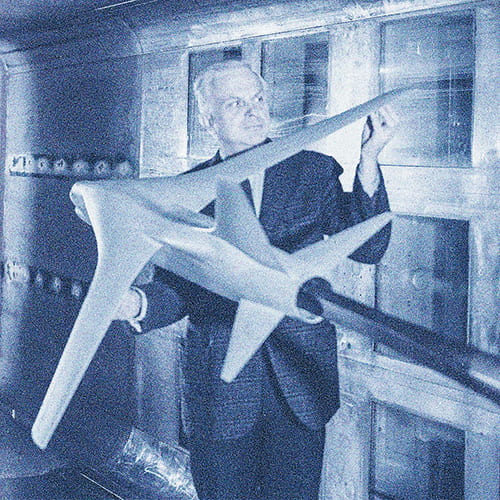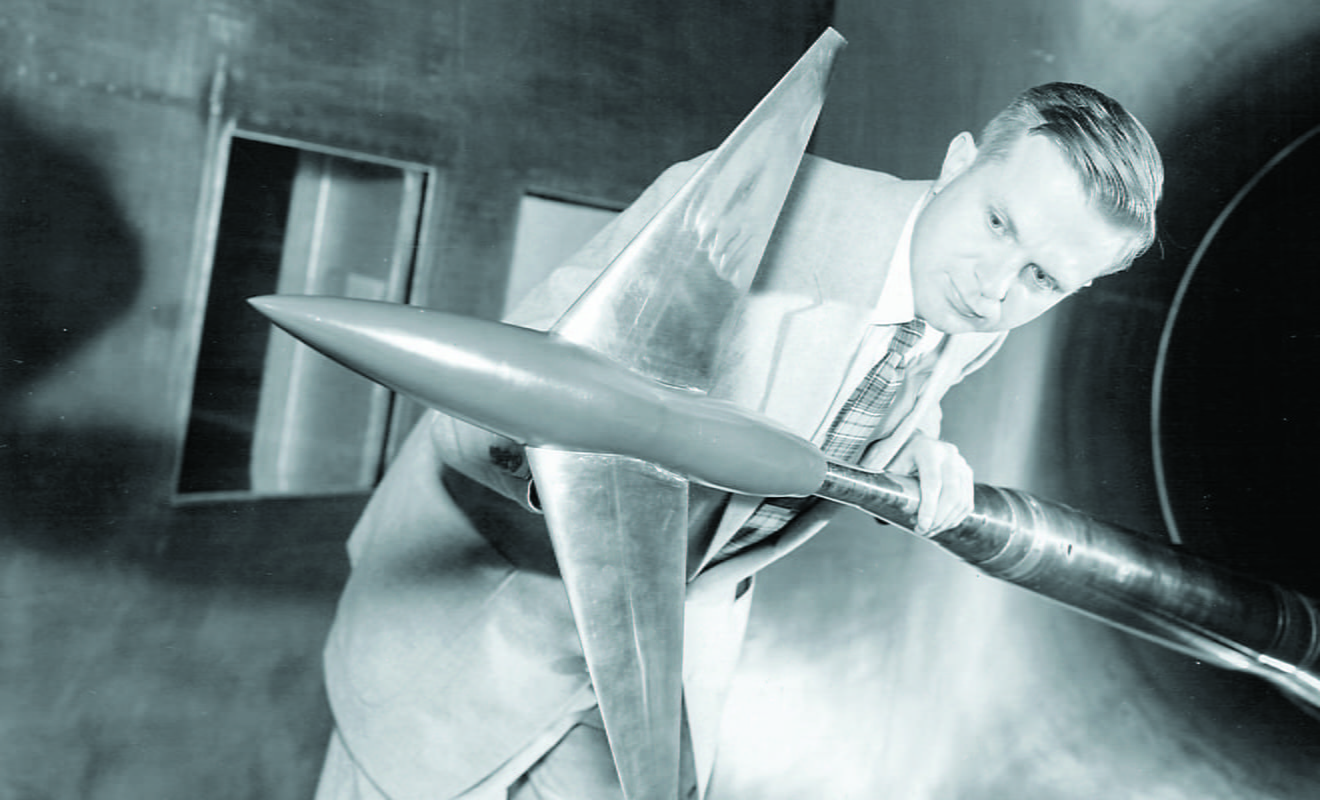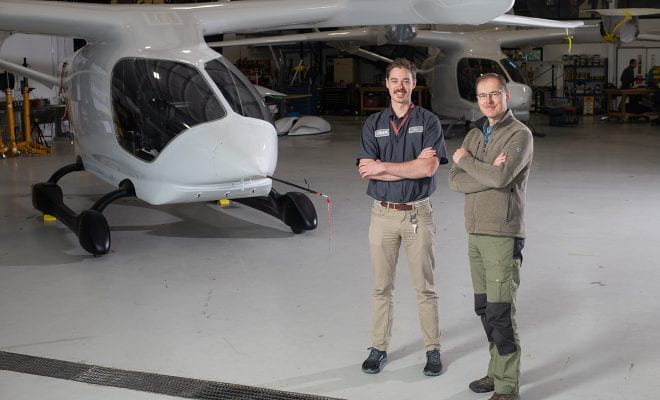In 1969, he unveiled his newly designed supercritical wing. Featuring a thick, blunt leading edge, a flat top, and a bulging underside with a downward lip on the tail edge, this new wing reduced drag, which has saved billions of dollars in fuel cost and can be seen on nearly every commercial airliner. Taking inspirations from the natural world, he spent much of the 1970s incorporating his observations of birds and existing research on vertical stabilizers, introducing the concept of winglets, small vertical extensions on the outer tips of wings. These winglets further reduced drag and are now commonly found on modern military and commercial aircraft.
The Father of Winglets: Richard T. Whitcomb, Class of 1943
While a young boy growing up in Worcester, Dick Whitcomb could be found in the fields near his home launching and recovering rubber band–powered, balsa wood model airplanes. He was obsessed with watching as they glided through the air. Between flights, he would make modifications to help them soar higher and stay aloft longer, a lifelong passion that—years later—helped transform the entire field of aviation.
In the fall of 1939, Whitcomb enrolled at WPI as a member of the Class of 1943; he joined Sigma Xi, Tau Beta Pi, and the Aero Club, where he championed the concept of wind tunnels. He earned his degree in mechanical engineering, and after graduation accepted a position with NACA (the National Advisory Committee on Aeronautics), the predecessor to NASA (National Aeronautics and Space Administration), where he worked with the Langley Eight-Foot High Speed Tunnel. In 1952, he made the first of his three major contributions to aeronautics by radically altering the shape of aircraft fuselages to ensure a smooth cross-sectional area engineered to reduce drag at supersonic speeds. The area rule concept is now a critical design element of all modern high-performance aircraft.

Richard Witcomb ’43 shows off his design to reduce drag at supersonic speed.
Among his many honors, Whitcomb was the youngest-ever recipient of an honorary degree from WPI when it was bestowed upon him in 1956 at age 35. He was also awarded the Collier Trophy in 1954 and the National Medal of Science in 1973. He was inducted into the National Inventors (2003) and the National Aviation (2012) Halls of Fame. When he passed away in 2009 at the age of 88, the Smithsonian Institution noted his ideas were each radical departures from conventional aerodynamic theory and forever changed flight. His papers are available in the WPI Archives.
—University Archivist Arthur Carlson, assistant director of George C. Gordon Library




